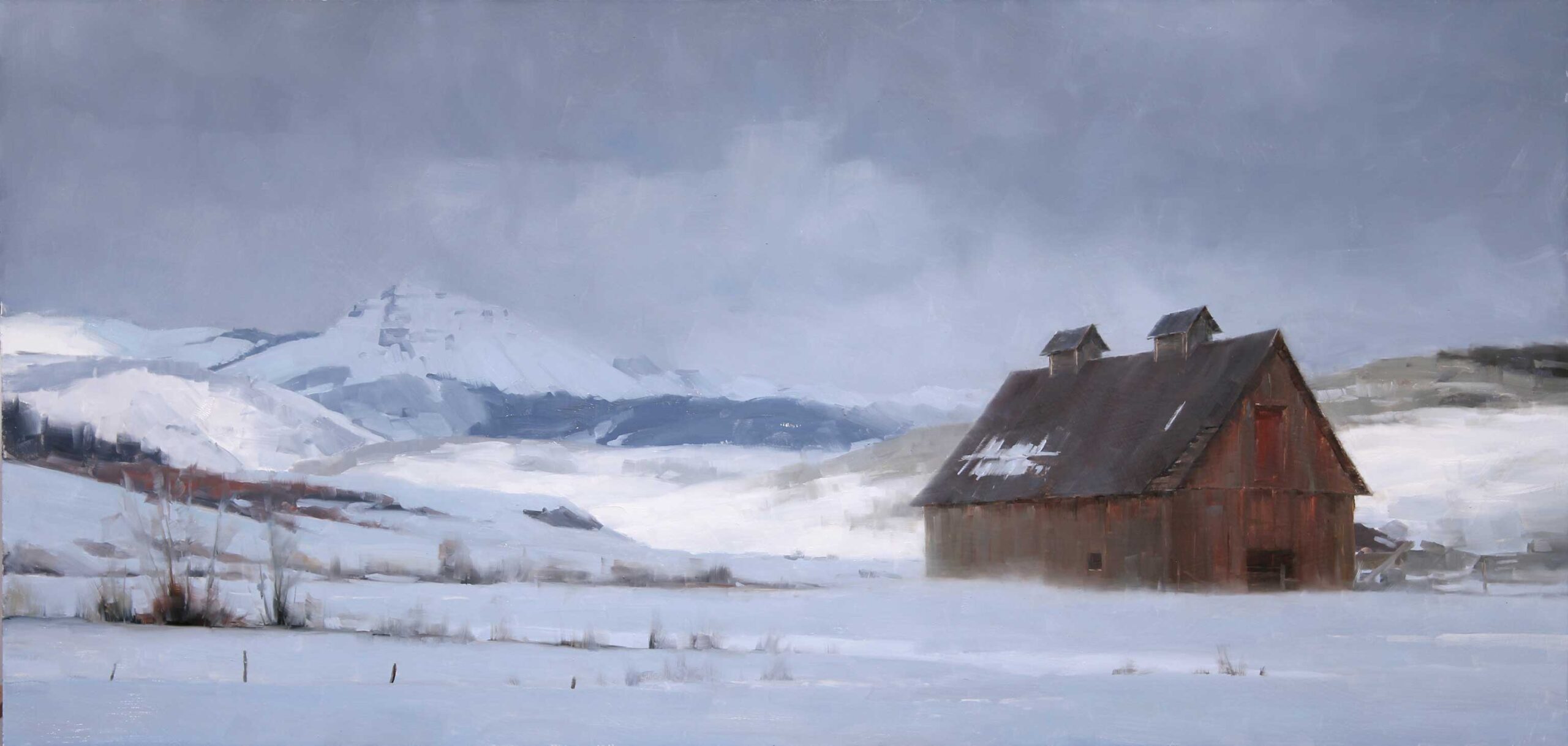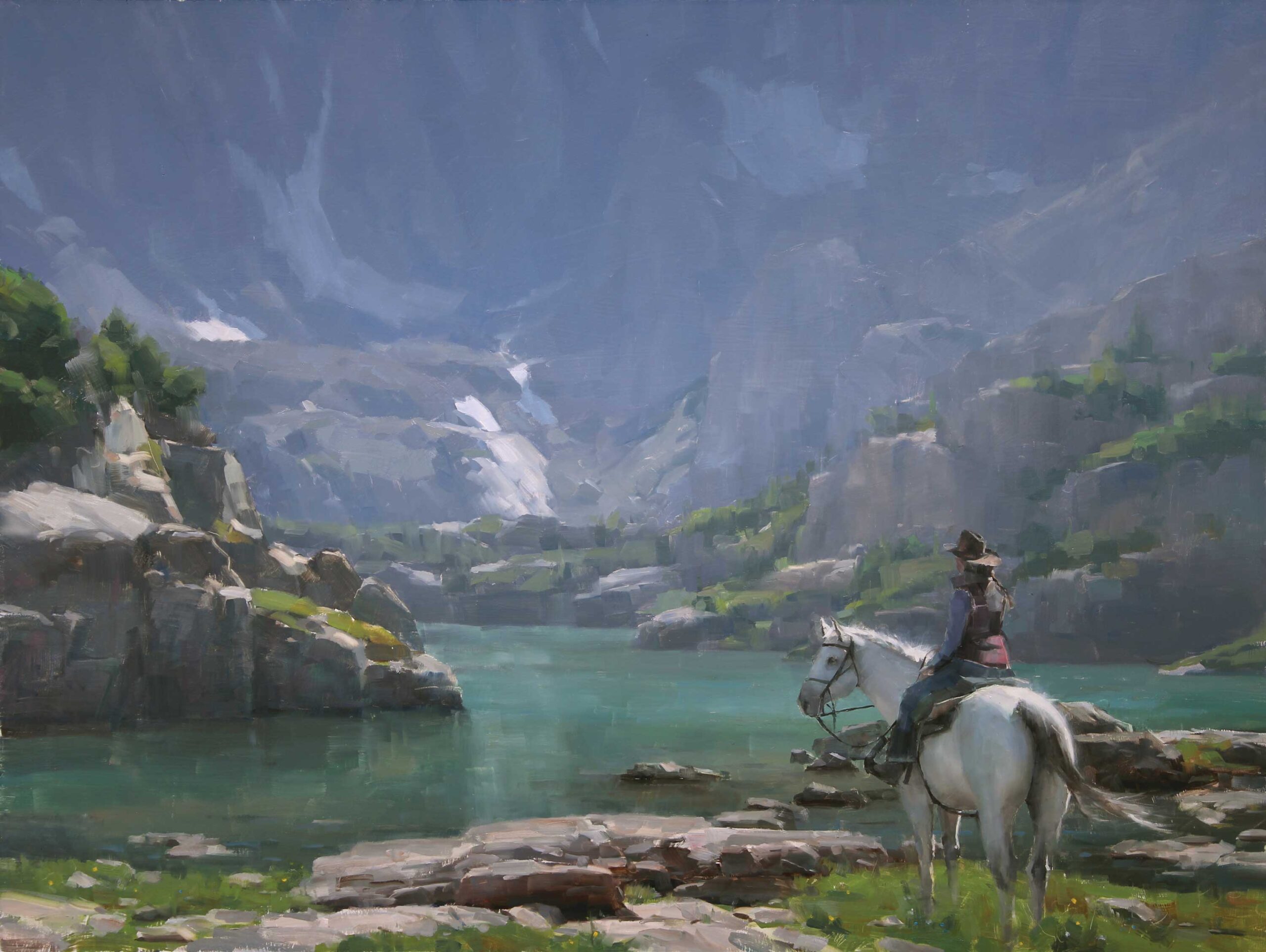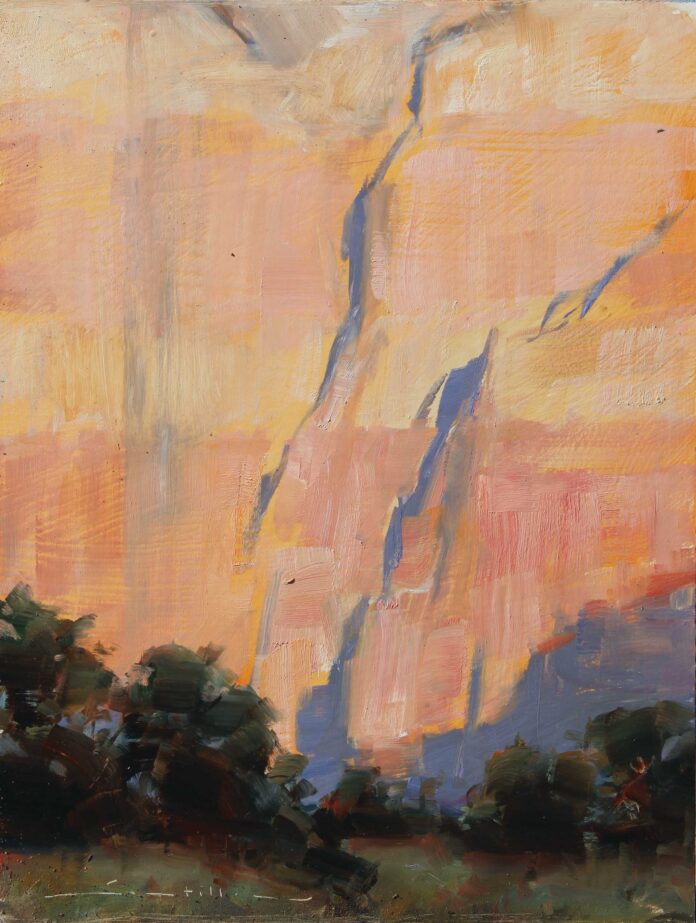The following is Part 2 of a feature article on the work of Dave Santillanes and his painting composition choices. See Part 1, “I’m Not Ignoring Composition, But …” at OutdoorPainter.com.
***
“All my paintings start out as abstract shapes, abstractions of what I’m seeing,” says Dave Santillanes. “The first thing I paint is shadows. I don’t touch the light colors until I have the shadows down. The design is made by the shadows — not the light family. I can paint any object I want if the shadow shape is there.
“Now, I could create the design and sledgehammer in the details based on the design, but it’s about balancing the elements.”

“Fading to Gray” shows Santillanes solving a unique compositional challenge. The barn is the star, but part of its charm is how it contrasts with the massive mountain in the background shrouded in atmosphere.
“For me, this painting was about how the barn is surviving,” he says. “It is getting older, and weather is coming in. Weather and barn have operated together for so many years. The wind is blowing the snow and the barn is standing up against the elements. The mountain in the background is softly painted. It’s there to create the setting for this painting. A secondary motif is the light setting off the mountain from behind — that was more of a design element. Such a secondary focal point helps set the mood or tell the story a little better. Design is mostly about creating balance.”
Santillanes employs the rule of thirds, which calls for an artist to divide the painting
surface into thirds both horizontally and vertically, placing the focal point(s) at the intersections of the lines. He also pays attention to the golden mean, an ancient concept of beauty based on nature’s patterns. He’ll move mountains to achieve harmony and balance in a composition.
“In the viewfinder, the mountain could have been three or four inches to the right or left of the barn, but when painting outdoors, I’ll move things slightly,” says Santillanes. “Using the rule of thirds, I placed the barn on one of the prominent points. Putting it at one of those intersections makes it a strong focal point. It’s all for the sake of the design. To balance the composition, I needed a prominent point on other side of the canvas, otherwise there would be an unsettling feel to the painting.
“When I first started painting outdoors, I painted whatever I saw in my viewfinder. But I started asking myself why I was restricting myself when I have 360 degrees of subject matter, so I started using the full view and including more elements in the scene. I created that band of light leading to the mountain so it would pull the viewer back there. Visually, mountains carry a lot of weight. I was trying to find a way to not make it too weighty. I played with the subtleties of the values. The edges on the mountain are just as sharp as the edges in the foreground, but the values are so close to the clouds that it doesn’t seem that way. I had to tone down the value to make it softer so it would recede.”

“High Places,” the piece that took the top prize in the 9th Annual PleinAir Salon, has an undeniably compelling composition. And Santillanes had to work for it. “I’ve hiked up to this lake of glass to paint it several times, and it is a haul to get up there, especially with all my painting gear,” says the artist.
“It’s about 15 miles round trip, but the reward is this scene. I was tired the first time I hiked up there, but I wasn’t tired on subsequent trips because I knew what would be there when I got up to it. It’s an amazing place to be. That’s my wife on the horse. The horse and rider were not there, but I wanted to create a scene that transcends time, so I put them in the painting. That line coming off the right and the rider’s gaze going off into the distance are design elements that create atmosphere and depth.
“Other elements that pull people into the painting composition are careful drawing and linear detail. But mostly it’s about the place. There’s something about the freedom you feel up there, and I wanted to convey that sense of freedom.”
Bonus: Study with artist Dave Santillanes and you’ll quickly see why he believes plein air paintings are even better than keeping a diary! Start with his PaintTube.tv art video workshop, Painting Landscapes (click here).




